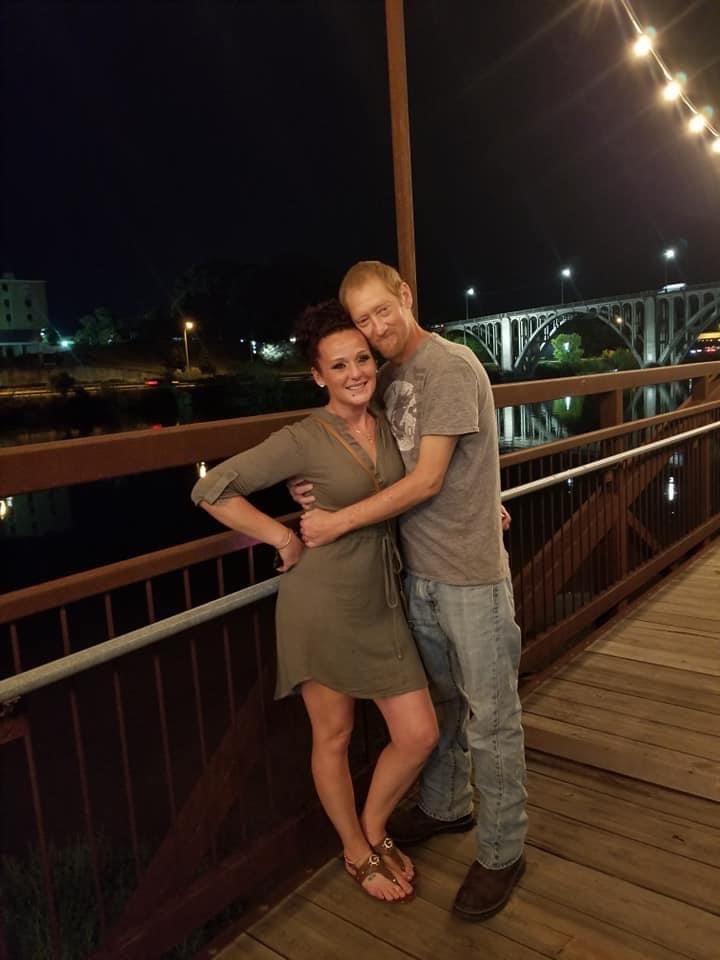
When Amanda Lee met Adam Lee Chapman, she knew the romance was meant to be. The 17-year-old fell hard for the 27-year-old Alabama football fan, and they were married in 2006.
Amanda knew that Adam had Goodpasture syndrome, a rare autoimmune disorder that causes the body to make antibodies that attack the lungs and kidneys. It most often strikes men in their 20s and can cause kidney inflammation and, ultimately, kidney failure. What she didn’t know was that Goodpasture syndrome would change the course of her life.
“When I turned 18, Adam got really sick and was in and out of the hospital a lot,” Amanda recalled. “Ultimately, we were told that he needed a kidney transplant.”
Thinking that a family match was most likely, the Chapmans hoped that Adam’s family would get tested. “His brother was a match but wasn’t a good candidate for donation,” Amanda said.
‘A perfect match’
In desperation, Amanda was tested. “I knew that Adam and I were a perfect match as a couple, but it turned out that our kidneys were also a perfect match.”
Amanda was ready and willing to be a living kidney donor, but because she was only 18 years old, the UAB Comprehensive Transplant Institute (CTI) care team was less sure. “They had a meeting to see what the risks and benefits were,” she said. “They decided that because we were married, it was best to try and save his life rather than lose him.”
UAB CTI surgeon Michael Hanaway, M.D., said the younger a donor is, the more years they must live with only one kidney. In 2007, Amanda was the youngest living kidney donor the CTI had ever considered. “We don’t have a crystal ball,” he said. “We don’t know what’s going to happen to a donor 20, 30, or 40 years down the line.”
Dialysis is time-consuming and not as effective at removing waste products from the body as a functioning kidney. “People see us for a transplant because they hate dialysis,” Dr. Hanaway said. “When they’re chained to dialysis, they’re prevented from working, traveling, and spending time with their families.”
Bittersweet blessings
Adam was 28 when he received Amanda’s kidney. Following the transplant, “he was up and running within 24 hours,” Amanda said. She also fared well and gives UAB credit for the blessings that followed. “The UAB team was just wonderful, and we wouldn’t have had our many years of happiness without them,” she said.
Chief among those blessings is children. “We didn’t want to try to have kids before the transplant; our daughter Allyssa is now 12, and Peyton is 9,” she said. “Peyton is the spitting image of Adam.”
Sadly, Adam passed away after a fall in January 2020. Heartbroken, Amanda credits her father-in-law, Mark, for giving her strength. “He has been my backbone through it all, and he keeps Adam’s memory alive,” she said.
Now 35, Amanda honors Adam’s memory by taking the kids to places that were special to their dad. “We go to the beach and go swimming because he loved the water,” she said.
A selfless sacrifice
Amanda is an unabashed advocate of living kidney donation. “There’s no greater thing I could have done with my life than save someone else’s life,” she said. “If someone wants to become a donor, go for it. It will make you a different person.”
Dr. Hanaway commends Amanda for giving her husband a gift that kept him off dialysis for 13 years and improved the quality of life for both of them.
“There are two options for a transplant recipient: waiting for a kidney from a deceased donor or receiving a kidney from a living donor,” he said. “We think that, in almost every situation, a kidney from a living donor is better.” A living donor’s kidney has better immediate function and better long-term function, which means more years off dialysis. “With a living donor, the patient is always going to get a kidney that is the best we can give,” Dr. Hanaway said.
Dr. Hanaway and the rest of the UAB CTI team have a deep appreciation for every living kidney donor. “This is one of the only situations where someone is accepting both the surgical risk and the long-term risk without accruing any benefit,” he said, adding that the willingness of donors to sacrifice an organ in service of another is both unusual and commendable. “The stories of people who want to donate and do donate are inspirational for us. It’s the most selfless act I can imagine someone doing.”
